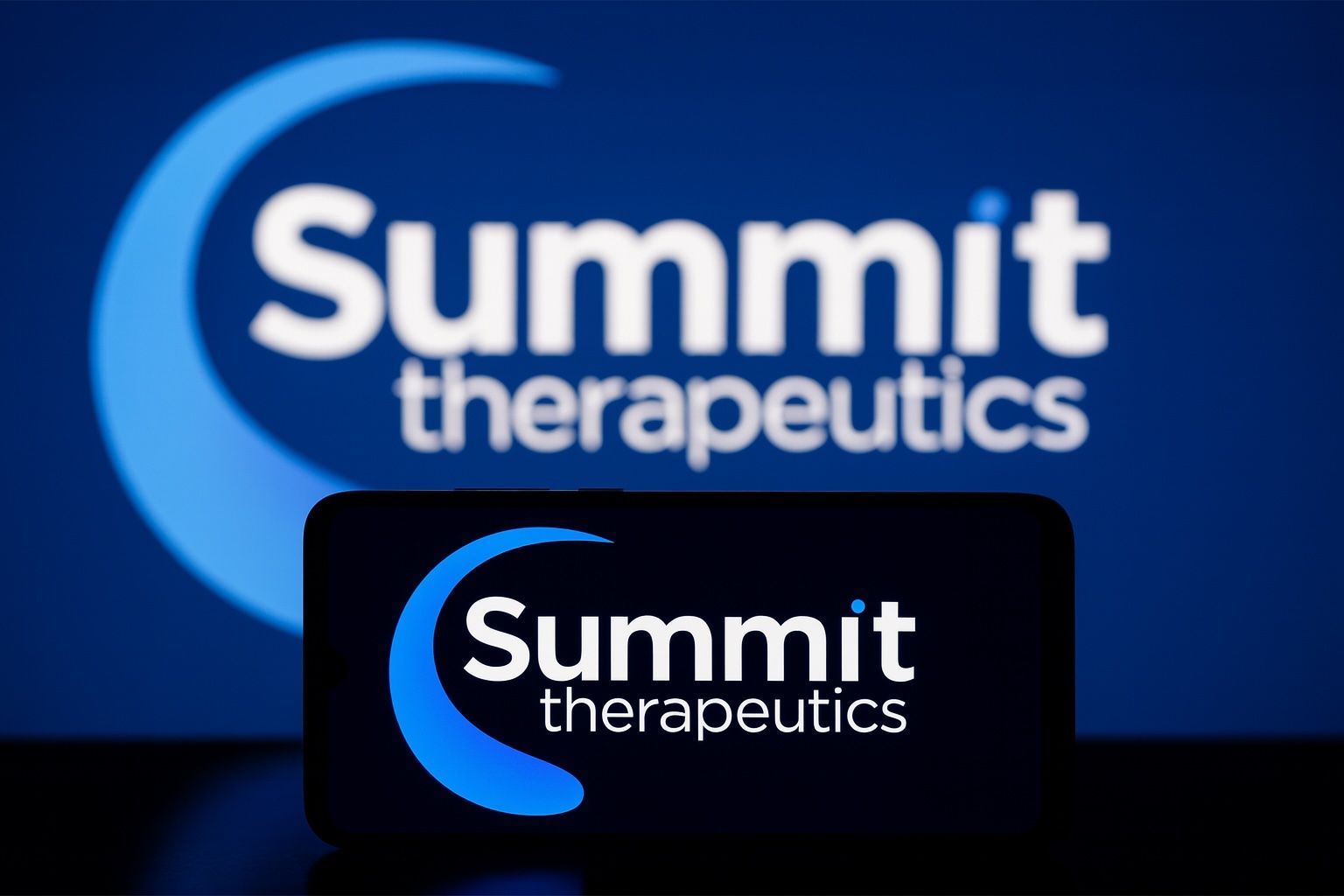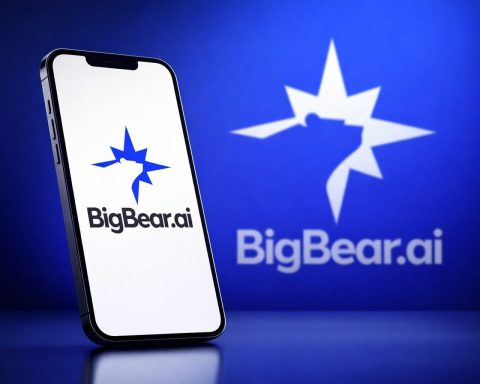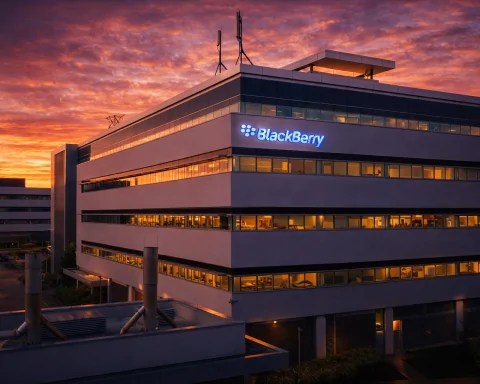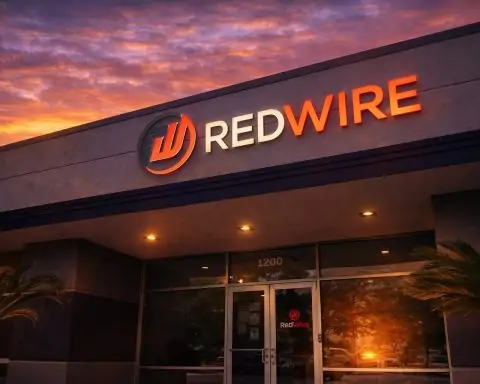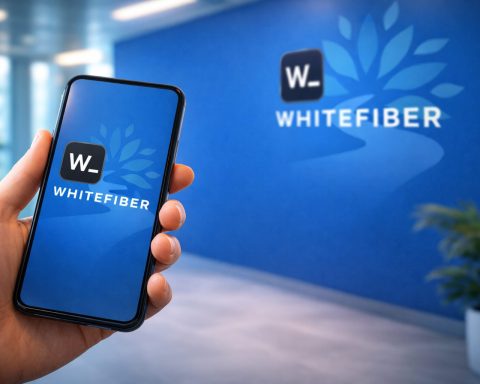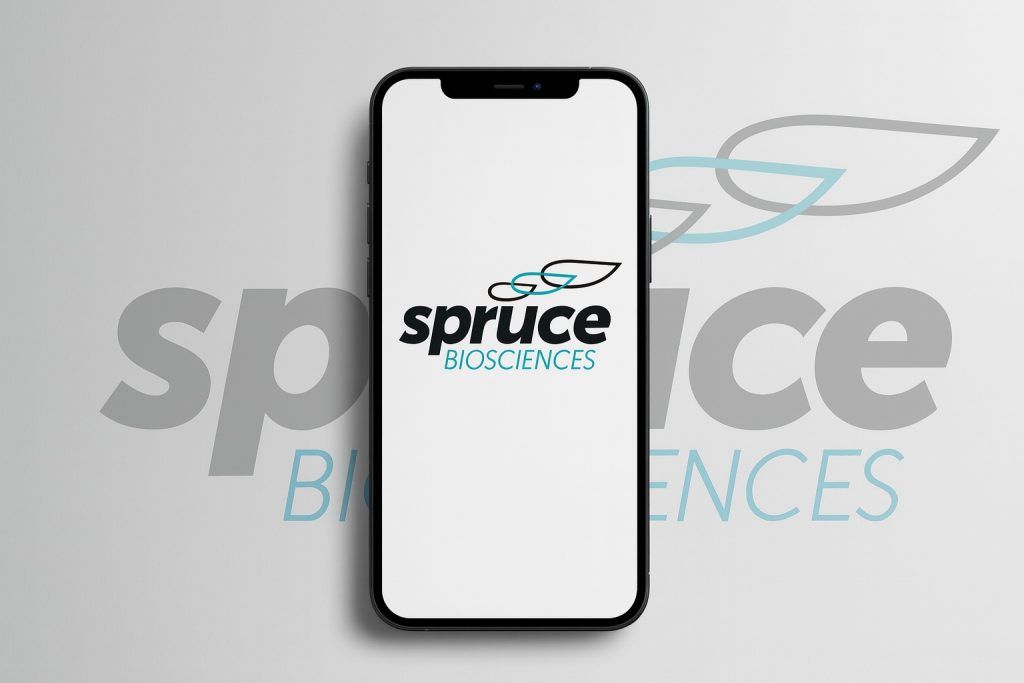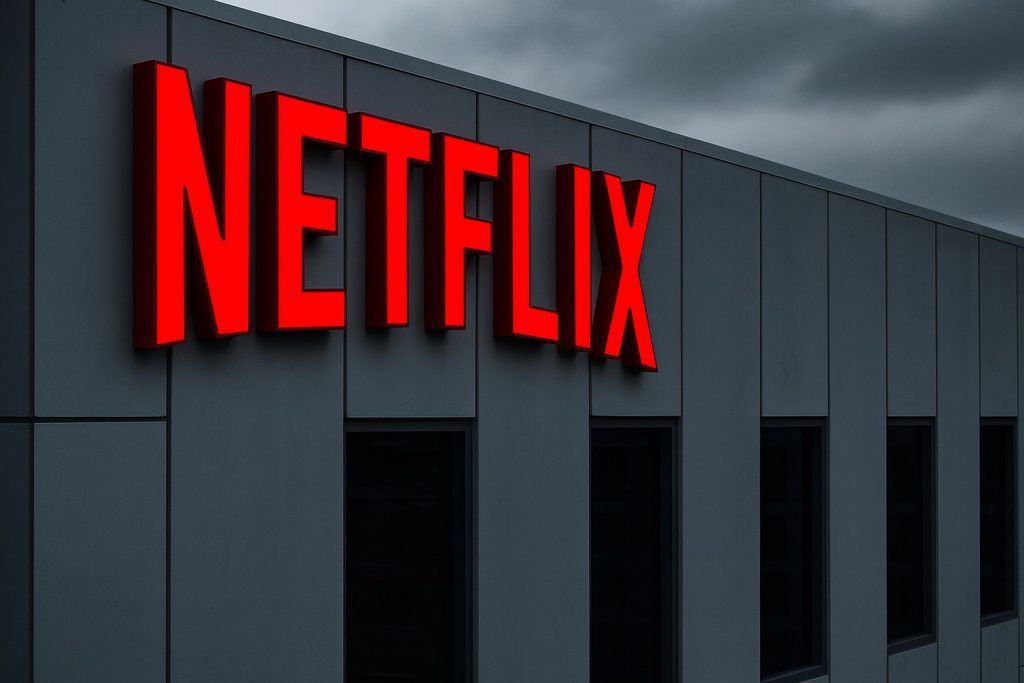What to Know Before Markets Open on October 20, 2025
- Stock Performance: Summit Therapeutics’ stock closed at $20.99 on Oct. 17, 2025 (Friday) [1]. Shares jumped about 16% over the past month and are up roughly +14% year-to-date [2], though they dipped ~1–2% this past week amid volatility. The company’s market cap now stands near $15.6 billion [3] after an astonishing multiyear run (+1,770% in 3 years) [4].
- New Trial Breakthrough: On Oct. 19, Summit announced impressive Phase 3 results for its flagship cancer drug ivonescimab. In a first-line lung cancer study (HARMONi-6) run by partner Akeso in China, ivonescimab plus chemo reduced the risk of disease progression or death by 40% vs. a standard PD-1 immunotherapy (tislelizumab) plus chemo [5]. This positive efficacy signal is being showcased at ESMO 2025, a major oncology conference, boosting confidence in Summit’s novel bispecific antibody therapy.
- Pipeline & Partnerships: Summit is aggressively expanding ivonescimab’s development. On Oct. 17, it launched a new Phase III trial (“HARMONi-GI3”) to test ivonescimab in first-line colorectal cancer alongside chemo [6]. Earlier in 2025, Summit also inked a collaboration with Revolution Medicines to combine ivonescimab with cutting-edge RAS inhibitors in mutant RAS tumors [7] – highlighting its strategy to broaden the drug’s reach via partnerships.
- Investor Sentiment: Despite recent pullbacks, analysts remain broadly bullish on SMMT. 16 Wall Street analysts cover Summit with a “Strong Buy” consensus and an average 12-month price target of $33.75 (≈61% above current levels) [8]. Price targets span from $12 (bearish) to $50 (bullish) [9], reflecting a wide divergence in outlook. Notably, Barclays initiated coverage at “Sell” with a $13 target, while H.C. Wainwright reiterated a Buy with a $50 target in September [10] [11].
- Upcoming Catalysts: Summit will report Q3 earnings and host an ESMO data call on Oct. 20, 2025 [12]. Investors are keen for updates on ivonescimab’s progress and any regulatory/partnering plans. Key near-term catalysts include potential U.S. regulatory feedback on trial designs, additional Phase 3 readouts (e.g. Summit’s global HARMONi trial for EGFR-mutant lung cancer), and further data on overall survival – critical for eventual FDA approval. Any new partnerships or financing moves could also sway the stock.
SMMT’s Wild Stock Ride in 2025
Summit Therapeutics’ share price has experienced extreme swings this year. After a steady climb through late summer, SMMT spiked to an intraday high above $25 on Oct. 13, 2025, before pulling back to end the week just under $21 [13]. The stock fell 4.5% on Friday (Oct. 17) alone [14], capping a choppy few days as traders braced for the ESMO conference and earnings. Despite the recent dip, Summit’s stock is still up double-digits in 2025, roughly in line with the broader biotech sector (the SPDR S&P Biotech ETF is +~20% YTD) [15].
These gyrations underscore both the high hopes and high risks embedded in Summit’s valuation. The company’s market cap has ballooned above $15 billion [16] – remarkable for a firm with no approved products yet. Indeed, Summit’s value has leapt more than 600% in the past year [17] on optimism around ivonescimab. This ascent propelled Summit into the biotech big leagues virtually overnight, far outpacing indices and many peers. (For context, Summit’s current valuation now rivals some mid-cap pharma companies and is far above typical pre-revenue biotechs.)
Volatility has been intense. Back in April 2025, Summit’s stock plunged 36% in one day after Akeso unexpectedly released an interim overall survival analysis from the HARMONi-2 trial in China [18] [19]. That early OS data fell short of statistical significance (at a very strict p<0.0001 threshold), sparking investor jitters about ivonescimab’s ultimate benefit. Similarly, in September, shares tumbled over 25% in response to Summit’s World Lung Conference update on HARMONi – even though the longer follow-up showed an improving survival trend [20] [21]. These sharp sell-offs illustrate how hypersensitive the market is to any clinical hints, positive or negative, given Summit’s sky-high expectations.
Yet each pullback has been followed by a recovery, as more data and expert commentary provided context. After the April OS scare, Summit clarified that the interim look was at just ~39% data maturity with a hazard ratio ~0.78 favoring ivonescimab [22] [23]. Evercore analysts urged calm, noting the result “while technically not yet significant, had a strong trend likely to hit significance with more data” [24]. In other words, the initial panic may have been an overreaction to an early peek. Indeed, subsequent follow-up in September showed a nominally significant OS benefit (p=0.033) with longer western patient follow-up [25] [26] – helping validate Summit’s stance that it’s on the right track. This pattern – surge on breakthrough data, plunge on uncertainties, then partial rebound on perspective – has made SMMT a roller-coaster ride for investors in 2025.
Breakthrough Lung Cancer Data Boosts Bull Case
The latest ESMO 2025 reveal appears to bolster Summit’s bullish thesis. Over the weekend, Akeso (Summit’s partner) presented full results from the Phase III HARMONi-6 trial in 1st-line squamous non-small cell lung cancer (NSCLC). The headline: ivonescimab (Summit’s novel PD-1/VEGF bispecific antibody) outperformed a leading PD-1 inhibitor in that study [27]. Specifically, ivonescimab combined with chemotherapy cut the risk of progression or death by 40% compared to tislelizumab (a PD-1 drug) plus chemo [28]. This translates into a significantly longer progression-free survival (PFS) for patients on Summit’s drug. It’s a striking result because tislelizumab is an approved immunotherapy; beating it suggests ivonescimab’s dual-target mechanism may confer a real efficacy edge.
Summit’s management hailed the outcome as validation of ivonescimab’s potential “first-in-class” status. The data also included an overall survival (OS) benefit: patients on ivonescimab had a 22% lower risk of death (HR ~0.78) than those on the PD-1 therapy [29]. While OS data from HARMONi-6 were not fully mature, the trend was clearly positive – an encouraging sign, especially after earlier OS uncertainty. Notably, these Chinese trial results align with Summit’s own global HARMONi study signals: in Summit’s Western-led trial for EGFR-mutated NSCLC, ivonescimab + chemo showed a strong PFS benefit and a promising (if not yet fully significant) OS trend that improved with longer follow-up [30] [31].
In plain terms, ivonescimab is demonstrating efficacy across multiple lung cancer settings. It works as a two-pronged immunotherapy: simultaneously blocking PD-1 (to unleash T-cells) and VEGF (to cut off tumor blood supply). This combo approach is akin to giving a PD-1 inhibitor (like Merck’s Keytruda) plus an anti-angiogenic drug (like Avastin) – but ivonescimab delivers it in a single antibody. The positive data suggest that this “all-in-one” may be highly potent. If backed by further trial successes, Summit’s drug could become a formidable new entrant in lung cancer, one of the largest cancer markets globally.
Broadening Pipeline and Partnerships
Summit isn’t stopping at lung cancer. The company is rapidly expanding ivonescimab’s trials into other tumor types and combination regimens:
- New Colorectal Cancer Trial: Summit just announced “HARMONi-GI3,” a Phase 3 trial of ivonescimab plus chemo in first-line colorectal cancer [32]. This suggests Summit sees potential beyond lung – perhaps leveraging ivonescimab’s VEGF-inhibiting aspect (since Avastin is part of standard care in colon cancer). The trial’s launch indicates confidence and adds another shot on goal for a major indication.
- Revolution Medicines Combo: In June, Summit partnered with Revolution Medicines to test ivonescimab alongside RAS(ON) inhibitors in RAS-mutant cancers [33]. Revolution’s novel RAS inhibitors (targeting mutant KRAS, a common driver in lung and colorectal tumors) could pair synergistically with PD-1/VEGF blockade. This collaboration is a savvy move: if these combinations click, Summit could extend ivonescimab into hard-to-treat cancers driven by RAS mutations, with a partner sharing the risk.
- Pipeline Pivot from Antibiotics: It’s worth noting how dramatically Summit’s pipeline has transformed. Just a few years ago, Summit was known for developing a C. diff antibiotic (ridinilazole). That program failed its Phase 3 trial in 2022, delivering a major blow as ridinilazole could not beat standard vancomycin [34]. Summit’s stock collapsed, and the company pivoted entirely to oncology, shelving the antibiotic work [35]. As TS2.tech observed, Summit’s saga became a “cautionary tale” of biotech risk – that promising Phase 2 data doesn’t guarantee Phase 3 success [36]. Learning from that setback, Summit “reinvented” itself by licensing ivonescimab from Akeso in late 2022 for a hefty sum. This bold pivot has so far paid off immensely, but it underscores how binary biotech bets can be – a point not lost on investors even as excitement builds for ivonescimab.
Today, Summit’s sole focus is oncology, with ivonescimab as the crown jewel and multiple shots on goal (various trials in lung and beyond). The company’s ability to execute on these trials and secure regulatory wins will determine whether its current lofty valuation is justified. Summit’s pipeline strategy also leaves open the possibility of partnerships or acquisitions. Given ivonescimab’s broad potential, some analysts speculate Summit could partner with a larger pharma for commercialization if Phase 3 success continues – or even become a takeover target itself. No such deals have been announced yet (aside from the Akeso and Revolution partnerships), but any hints in this direction could be a future catalyst.
Analysts and Experts: Bullish But Cognizant of Risks
Wall Street’s take on Summit Therapeutics is overwhelmingly positive, albeit with a few vocal skeptics. The stock’s dramatic rise and pivotal trial results have drawn attention from numerous biotech analysts:
- Bull Case: Optimists argue that ivonescimab could be a game-changer in lung cancer and possibly other tumors, justifying a much higher valuation if approvals are won. The average analyst price target of ~$33–34 implies significant upside [37]. Several analysts at boutique firms have issued aggressive targets (e.g. $40 to $50), essentially betting that Summit will evolve into a commercial-stage oncology player worth tens of billions. The core bull thesis: Summit’s drug addresses huge markets (NSCLC is a ~$20B+ global market) with an improved therapy, and the company might only be in “early innings” of value realization if ivonescimab becomes a new standard of care. Some models, including a recent DCF analysis, even suggest a fair value north of $180/share in optimistic scenarios [38] – though such estimates hinge on long-term success and revenue far in the future.
- Bear Case: However, there are cautious voices. In mid-September, Barclays initiated coverage with an outright “Sell” rating and a mere $13 target [39], signaling doubts about Summit’s sky-high valuation. Bears point out that Summit is still years away from FDA approval or revenue. Enrolling and completing multiple Phase 3 trials is expensive and not guaranteed to replicate the early successes – especially since differences in patient populations (China vs global) could affect outcomes. Moreover, ivonescimab will face intense competition: the lung cancer frontline is currently dominated by Merck’s Keytruda (often combined with chemo), and other majors (like AstraZeneca, Roche) have PD-1/PD-L1 drugs and combo regimens. Even if Summit’s drug is excellent, cracking an entrenched market and gaining uptake is a challenge. The bearish view essentially questions whether Summit’s 60x price-to-book ratio (far above industry norms) is sustainable [40] [41], or if the stock has run too far, too fast on hype.
- Expert Commentary: Industry observers highlight both promise and uncertainty. After the April data scare, Evercore ISI analysts remarked that the market “misinterpreted or underappreciated” the strength of ivonescimab’s interim data [42], maintaining that the drug likely just needs time to prove its full benefit. Oncology experts note that a 22% reduction in death risk against Keytruda (seen in Harmoni-2’s interim OS) “isn’t an outright failure,” and that it’s “probably too early to write ivonescimab off yet” [43]. In other words, the science remains compelling despite statistical nuances. At the same time, seasoned analysts caution that Summit’s path forward entails execution risk: the company must successfully navigate regulatory filings, scale up manufacturing, and possibly strike commercial partnerships to maximize ivonescimab’s reach. Any stumbles – be it a trial delay, safety concern, or financing hiccup – could deflate the lofty expectations baked into the stock.
For now, momentum and sentiment favor the bulls, but everyone agrees the next 6–12 months will be critical. As one biotech commentator quipped, Summit has “bought itself time and opportunity” with these trial wins, and now it must “execute and earn the market’s confidence” [44] [45] through the home stretch.
Outlook: High Stakes into 2026
Heading into late 2025, Summit Therapeutics finds itself at a pivotal inflection point. The company’s achievements this year – multiple Phase 3 victories, pipeline expansion, and a strong cash runway (bolstered by past fundraising tied to the Akeso deal) – have set the stage for a potential FDA filing in NSCLC in 2026 if all goes well. Management’s tone is optimistic: they aim to “change the treatment paradigm” in EGFR-mutant lung cancer and beyond, positioning ivonescimab as a next-generation backbone therapy.
Investors should watch a few key areas going forward:
- Regulatory Path: Summit will likely seek FDA breakthrough therapy designation or other expedited pathways for ivonescimab if the final data package is compelling. Any guidance from regulators on required evidence (especially OS data) will be crucial. The timing of a U.S. Biologics License Application (BLA) filing – possibly in late 2025 or 2026 for the EGFR-mutant 2L NSCLC setting – could be clarified soon.
- Competitive Landscape: How rivals respond will matter. Major players like Merck and AstraZeneca aren’t standing still – they continue to test new combos (e.g. adding TIGIT inhibitors or other novel agents to PD-1 therapy). Summit’s advantage is a head start in the PD-1 + VEGF bispecific niche, but at least one Chinese competitor (Junshi Biosciences) is reportedly developing a similar bispecific [46]. Moreover, Akeso itself (Summit’s partner) could become a competitor in some markets where Summit doesn’t have rights. Summit must execute on commercialization, potentially with a larger partner, to secure its market share if approved.
- Finances and Dilution: As a clinical-stage biotech with no revenue, Summit will continue to burn cash on trials. The company had over $500M in cash mid-year, but costly Phase 3 programs mean additional funding or partnerships may be needed in 2026 unless a regulatory approval comes quickly. So far Summit’s largest backer (billionaire CEO Robert Duggan) has been willing to invest heavily in the vision. Still, investors will keep an eye on any capital raises that could dilute shareholders – a common risk for pre-revenue biotechs.
In summary, Summit Therapeutics now stands as one of 2025’s biotech success stories, evolving from near-obscurity into a $15B oncology contender. The stock’s headline-grabbing rallies and plunges reflect the stakes: enormous potential rewards tempered by clinical and commercial uncertainties. With critical data updates and earnings on deck, the next few days will provide fresh clues to Summit’s trajectory. If ivonescimab’s performance continues to impress and management offers positive guidance, SMMT could regain upside momentum. But if new questions arise, volatility may persist. As TS2’s analysts put it succinctly, Summit offers a “high-risk ‘lottery ticket’ on a much-needed medical breakthrough, paired with the downside risk of further dilution or trial failure” [47] [48]. In the near term, all eyes are on Monday’s call (Oct. 20) for signs of how this dramatic biotech saga will unfold next.
Sources: Summit Therapeutics Press Releases [49] [50] [51]; OncologyPipeline [52] [53] [54]; TechStock² (TS2) [55] [56]; SimplyWall.St [57] [58]; StockAnalysis/Nasdaq data [59] [60]; Yahoo Finance/XBI Index [61].
References
1. stockanalysis.com, 2. simplywall.st, 3. stockanalysis.com, 4. simplywall.st, 5. www.smmttx.com, 6. www.smmttx.com, 7. www.smmttx.com, 8. stockanalysis.com, 9. stockanalysis.com, 10. stockanalysis.com, 11. stockanalysis.com, 12. www.smmttx.com, 13. stockanalysis.com, 14. stockanalysis.com, 15. finance.yahoo.com, 16. stockanalysis.com, 17. stockanalysis.com, 18. www.oncologypipeline.com, 19. www.oncologypipeline.com, 20. www.smmttx.com, 21. www.nasdaq.com, 22. www.oncologypipeline.com, 23. www.oncologypipeline.com, 24. www.oncologypipeline.com, 25. www.smmttx.com, 26. www.smmttx.com, 27. www.smmttx.com, 28. www.smmttx.com, 29. www.oncologypipeline.com, 30. www.smmttx.com, 31. www.smmttx.com, 32. www.smmttx.com, 33. www.smmttx.com, 34. ts2.tech, 35. ts2.tech, 36. ts2.tech, 37. stockanalysis.com, 38. simplywall.st, 39. stockanalysis.com, 40. simplywall.st, 41. simplywall.st, 42. www.oncologypipeline.com, 43. www.oncologypipeline.com, 44. ts2.tech, 45. ts2.tech, 46. www.oncologypipeline.com, 47. ts2.tech, 48. ts2.tech, 49. www.smmttx.com, 50. www.smmttx.com, 51. www.smmttx.com, 52. www.oncologypipeline.com, 53. www.oncologypipeline.com, 54. www.oncologypipeline.com, 55. ts2.tech, 56. ts2.tech, 57. simplywall.st, 58. simplywall.st, 59. stockanalysis.com, 60. stockanalysis.com, 61. finance.yahoo.com
